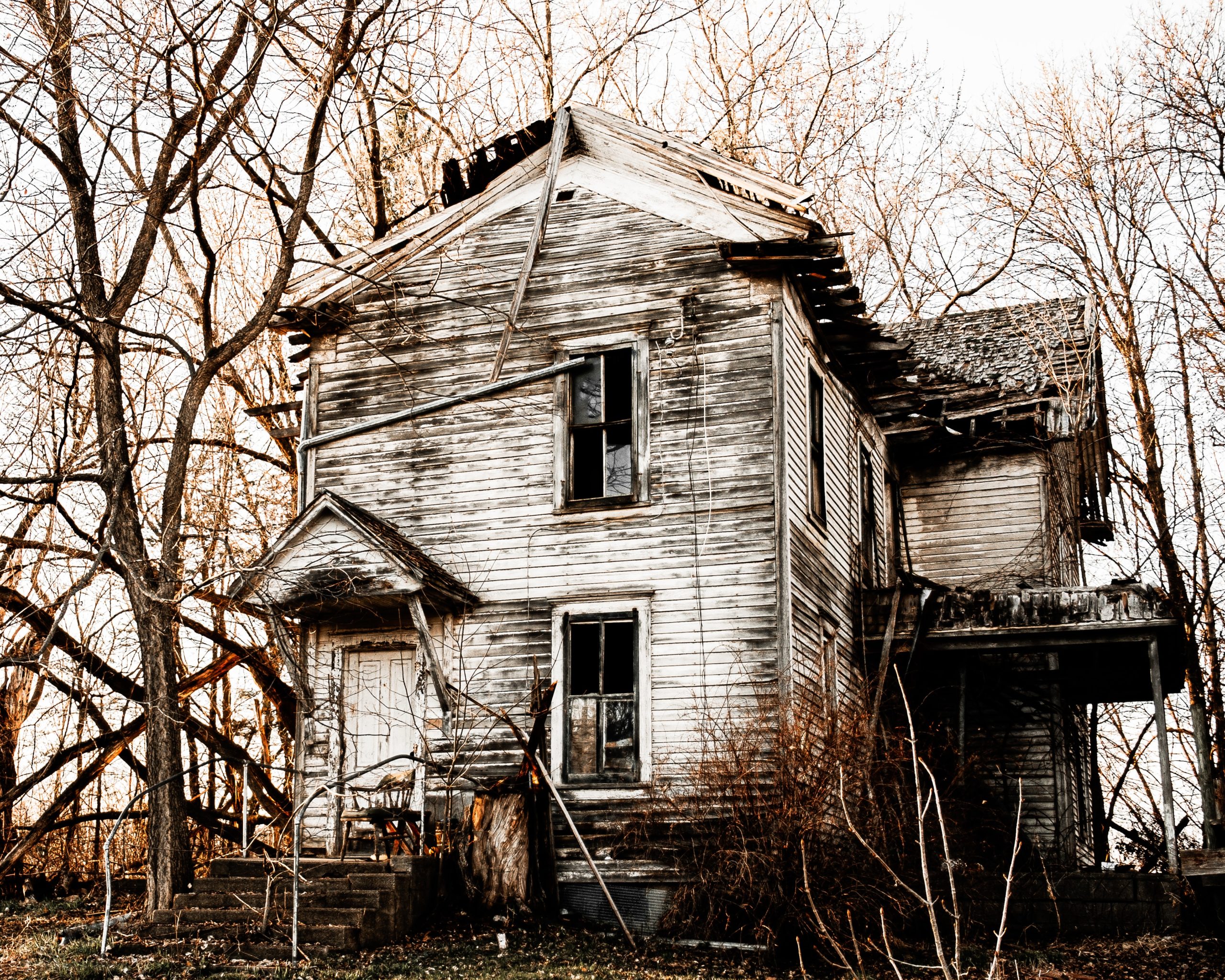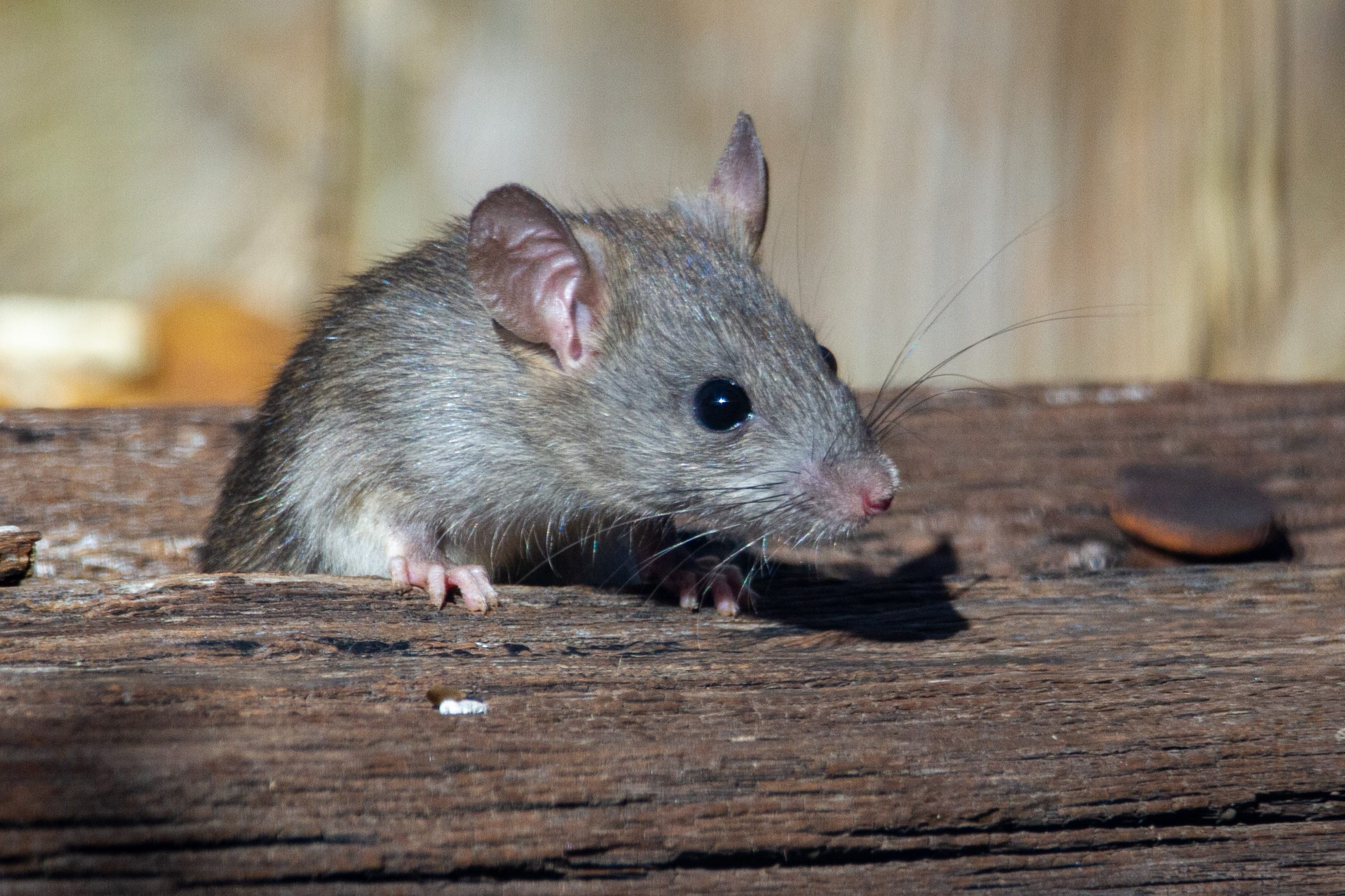According to the U.S. Census Bureau, roughly 14 million housing units in the U.S. reported seeing cockroaches in their home in the last year out of the about 124 million occupied housing units in the country. Rodent sightings in homes were slightly more common, coming in at 14.8 million in the last year. When you read further into their report to learn that renters are almost twice as likely to see cockroaches than residents of owner-occupied units, you might start to wonder, who is responsible for pest control in a rental property?
The answer is: it depends. While landlords are generally required to provide safe and habitable housing to tenants, where responsibility lies for a specific infestation depends on a number of different factors.
If you own rental property, it’s essential that you understand the laws about pest control in your state and at least consider providing a pest provision in your lease. Pests aren’t just something that causes a nuisance for your renters, but they can damage your property, pose a health and safety concern, and ultimately leave you with unhappy tenants, high turnover rates, or vacancy.
Let’s dive in and take a look at what you need to know about pest control in rental properties.
What a landlord is and isn’t responsible for when it comes to pest control varies from state to state. Additionally, there can also be local laws regarding pest control in rental properties.
Important considerations regarding who is responsible is what type of pest has infested the dwelling, as well as how, when, and why they were able to get into the property.
For example, if there is an infestation that resulted from the actions of your tenants, they would be technically responsible. This could occur if they leave the apartment or house a complete mess, with food left out and garbage strewn around.
However, if a home was infested before the tenants moved in, it is obviously not their fault that there is a pest problem.
As you might imagine, the actual reality of proving who is responsible for a pest infestation can be very difficult. It’s important to understand the laws in your state and also expect that it is generally the landlord's responsibility to respond to a reported pest issue promptly. Depending on what state you’re in, you might be allowed to attempt a DIY solution. In other states, though, you might be required to hire a professional service.
It’s also the responsibility of landlords to engage in some aspects of preventing pest infestations. This might include maintaining cleanliness in common areas, seasonal pest control if applicable, or fixing water leaks that might attract pests.
In some states, landlords are required to give their tenants handouts or instruction regarding pest prevention.
Another important factor is the wording of the lease that was signed between you and the tenant. Some landlords will put a clause in the lease concerning pest control. This clause will take precedence over state law, but if there is no such clause, the general laws of your area will be applicable.

In nearly every state in the U.S., there are laws that state that landlords can only rent out housing if it is “habitable.” You will see this referred to as a warranty of habitability.
This is an implied agreement that comes from state statutes and local building codes that outline the minimum requirements that make a home habitable and decent. In some states, the way to satisfy the warranty of habitability is by complying with all of the applicable local housing codes and state housing codes.
In other states, the warranty of habitability isn’t related to housing codes but is based instead on court decisions. In these instances, the court might choose to require more out of a property owner in terms of what “fit and habitable” means.
Landlords are, in most US states, responsible for providing livable, safe residences for their tenants. This includes conducting both preventative measures and dealing with problems in a timely fashion.
Preventative measures might include monitoring a potential pest problem, reducing access to the building for pests, and reducing water sources that can attract pests. They also might be responsible for managing garbage and recycling bins, ensuring that they are washed regularly and that trash and recycling is regularly collected. This can also include taking applicable season measures for pest control.
If a tenant does report that there is a pest issue, it is typically the landlords responsibility to check with the other tenants in the building in order to make sure the pest problem doesn’t spread through the building.
It is generally the responsibility of tenants to not bring in any new pests. They are also responsible for reporting any pest related problems right away.
In terms of not bringing in pests, tenants must keep their apartment clean and orderly so as not to encourage pes problems. If they have any pets, they should also take actions to prevent the potential for a flea infestation. Lastly, tenants should take care to not bring pests in by visiting other people that have pest problems or by inviting over people that do. In the case of this last bit, this is particularly important when it comes to something like bed bugs, which is incredibly capable of spreading between people.
Having a pest infestation can be a huge headache for both you and your renters. If you aren’t convinced that it’s something you should be worried about, stick with us while we look at why pest control matters.
If your rental property has pests, they can end up causing quite a bit of damage to your property. Termites, mice, rats, ants, and roaches can all lead to property damage that can be costly to repair. The population of many different types of pests can also balloon really fast, meaning that it’s best to figure out a solution to the problem immediately as soon as you learn that it’s going on.
A number of different pests can pose very real concerns in terms of both health and safety. A home that is infested with rodents or pests can leave people with respiratory issues and otherwise at risk of coming in contact with diseases carried by the pests.
If you have a rodent problem in your rental problem, they can even cause electrical fires by chewing on electrical wiring. Not only does it put your property at risk, but it also puts the lives of your tenants at risk to let a rodent problem persist without intervention.

If there are pest problems in your rental properties, you’re probably not going to have the happiest of tenants. Whether you own one single-family rental or a huge apartment building, you likely know just how important it is to keep your tenants happy. Unhappy tenants aren’t only more likely to move out sooner, leaving you with a vacancy to fill, but it can also create tension and issues in just about every other aspect of your landlord-tenant relationship.
As you might imagine, tenants will likely move out more quickly if there is a pest problem that is your responsibility to deal with that you don’t deal with. Having high turnover rates is both time-costly and financially costly, and you might even find that your rental gets a bad reputation and you have to hold vacancy.
If there is a pest infestation in your rental property that you are responsible for that you fail to deal with, it’s possible you could even run into trouble in the courts. The rights of your tenants to sue you in regards to pest issues will depend on the state you live in and the type of pest, and whether or not they win would have to do with the circumstances of the case. That being said, you likely want to avoid any legal troubles if you can stand to.
Dealing with a pest problem is a lot cheaper if you catch it early, and even cheaper if you prevent it entirely through proper maintenance and repairs. The longer you let a pest problem go without dealing with it, the more costly it will be to get rid of the pests and make any necessary repairs.
Depending on what region of the country you live in and whether the property is more urban or more rural, your property might be more susceptible to certain types of pests than others. Let’s look at some of the most common types of pests in rental properties in the U.S.
Prevention is best when it comes to most pests, and ants are no exception. Ants will commonly move into a dwelling because of weather conditions, but they are a lot more likely to stick around if they find plenty of food to enjoy inside. It’s important to keep units clean, keep food secure, and ensure that there aren’t compromised seals in windows indoors through which they can get in.

Whether it be rats, mice, or squirrels, no one wants to deal with having a rodent for a roommate.
Signs of rat infestations can include teeth marks on electric cables, droppings, and sounds in the walls and ceilings. Mice typically nest in warm, quiet spots in homes such as cabinets or inside walls. Through their incessant gnawing, they can chew through your food packaging and damage your furniture.
If your tenants hear scratching, scurrying, or chewing sounds in the ceiling, crawl spaces, or attic, you might have a squirrel problem. They are also known to chew electrical wires, which is a fire hazard.
Rats, mice, squirrels, and other rodents are known to carry diseases as well.
Bed bugs are hard to get rid of once they are in a dwelling. They typically fall under the warranty of habitability because a bed-bug infested home is not usually considered a habitable home in the court system. Proving who is responsible for bed bugs is also a very tricky matter because they spread so easily through buildings.
For this reason, dealing with bed bugs typically falls on the shoulders of landlords even if the infestation wasn’t there before tenants moved in. In a lot of states, there are laws on the books specifically about bed bugs even when they don’t have any laws about other types of common pests.
The signs of a bed bug infestation include a musty odor, bloodstains on bedding, or evidence of bed bugs in the form of eggshells, fecal spots, or shed skin.
Depending on what part of the country your rental is and how urban it is, cockroaches can be a major concern in rentals. They are often considered the landlord's responsibility, as in many places the presence of cockroaches is something that falls under the warranty of habitability.
Cockroaches are attracted to food residue, crumbs, dirty dishes, overwatered plants, cardboard, and more.
One of the most destructive pests that can take up residence in your rental property are termites. Damage caused by termites is often not covered by your property insurance, and the average cost to fix the destruction they cause is between $7,000 and $8,000.
Fleas most commonly infest houses that have pets. They can hop from infested dirt or grass onto your pet’s fur or from another pet. Once they are inside a house, they typically hide in cracks in the floor, furniture, and bedding.
If there’s a flea infestation in your rental, there is a good chance that it occurred because of pets kept by your tenants. However, it’s worth noting that fleas can actually live up to nine months in an empty house. That means that it is possible for a vacant apartment to have a flea infestation when new tenants move in.
The state laws around pest control in rentals can vary greatly, so it’s important to understand the laws in your state. You’ll also want to check into any local laws in your city, too.
In some places, like Alaska, the law clearly states that landlords must provide “extermination service if roaches, rats, mice or other pests infest the building, apartment, or property.” In other states, the only laws on the books in regards to pest control specifically pertain to bed bugs, such as New Jersey.
Another example of the variability of these laws is the state of Ohio. While they do require that landlords keep properties habitable and safe, they also allow landlords to repossess property if there are health code violations that are “primarily caused by any act or lack of reasonable care by the tenant, or by any other person in the tenant’s household, or by anyone on the premises with the consent of the tenant.”
Other states, such as Oklahoma, don’t have any laws at all about pest control in rentals. They actually don’t even have a clear understanding of whether or not it is considered a public health concern for a property to have pests like bedbugs. This means that, while landlords are not allowed to rent out properties that they know have infestations, there likely isn’t much legal action a tenant could take even if the pest infestation was the landlord's fault.
As you can see, states in the U.S. are all over the place when it comes to how clearly they define their laws around pest control in rentals.
Depending on where your rental is, pests might be more or less of a concern. Let’s look at some of the factors that inform how likely it is that one of your rentals will have an infestation problem.
One of the factors that is related to how frequently residents see pests is their income. The median income for households that haven’t seen either a cockroach or a rodent in the last year is much higher than the median income for households that reported seeing cockroaches or rodents daily.
In colder regions like New England, rodents are one of the more common pests because they look for warm places to camp out during the colder months. In warmer regions of the country, pests like ants and cockroaches can thrive. Cockroaches are typically more common in places that are both warm and humid, so they are less common out west where the climate is drier.
Rodents are more common in homes that are older than newer construction homes. Homes that were built in 1939 or earlier are the most likely to have rodent sightings, while houses built since 2016 are the least likely to have rodent sightings.

The American Housing Survey from the U.S. Census Bureau reported the metropolitan areas and states that have the highest percentage of households with rodents and cockroaches. The top twenty cities with rodent and cockroach problems are:
According to the same report, the top nine states with the most rodent and cockroach sightings in households are:
Understanding the factors that can influence the likelihood of having a pest problem can help you determine how much to prioritize pest prevention in your rental property.
Many landlords put a pest provision in their lease that will clearly delineate the type of support the landlord will provide if there is a pest issue, as well as what the tenant’s responsibilities are. As a landlord, it’s important to understand that tenants might not report a pest control problem if they think they will have to pay to remediate the issue. This can end up being incredibly costly to you in the end, as the pest can continue to cause damage to your property without knowing it.
For this reason, you might not want to create a pest provision that puts the responsibility fully on the tenant, even if it would be legal to do so in your state. As always, it’s a good idea to have a lawyer experienced in the field of landlord-tenant law look over your lease.
As with most problems in life, the best solution to a pest infestation is prevention.
Where your rental property is will determine which pests you should be most concerned with. That being said, some general tactics landlords can take to prevent pest problems include:
You can also work to educate your tenants about how to avoid pest problems while they are living in the home or apartment. Some of the things tenants can do to reduce the probability of pest infestations include:
It can be more difficult to get rid of pests in apartment complexes than it is in single-family residences. Even if you manage to exterminate pests in one apartment, they can move through the walls and infest another unit.
Even if you’ve done everything right to prevent a pest infestation in your rental, you still might get an unfortunate message from a tenant one day about roaches, rats, bedbugs, or some other nasty critter. Here are the basic steps you should take to respond to a pest problem in a rental.
If a tenant reports to you that there is a pest problem in your rental property, you will want to address their complaint right away. Pests and rodents can breed very quickly, meaning the problem can go from manageable to completely out of control really fast.
Getting rid of pests is much easier when you catch an infestation early. It’s also good from the standpoint of best practices as a landlord to respond quickly to your tenant when they have a complaint of this nature.
The first step once you are over at the rental property is to figure out exactly what type of pest is infesting the property. Only once you’ve determined that can you figure out how to best move forward. Rather than relying on the information provided by your tenants, you’ll want to check it out for yourself. If they confuse the difference between bedbugs and fleas, for instance, you could end up taking the totally wrong angle when attacking the problem.
If you can’t quite figure out what type of pest is in the rental, it’s best to call an exterminator.
The next step is to figure out how the pests are getting into the property. For some pests, like bed bugs and fleas, the answer is likely that they were carried into the home somehow. For others, though, you might be able to identify crevices, holes, or cracks where they are entering from the outside.
Depending on the state you live in, you might actually be required to hire a professional to deal with a pest infestation rather than dealing with it on your own, even if you are fully equipped to do so. You’ll want to become familiar with your state’s laws before choosing a DIY option.
If you decide that you aren’t equipped to deal with the infestation or your state law requires that you hire a professional, it’s time to call an exterminator. While it isn’t the cheapest option, these professionals do have the tools and skills to nip an infestation in the bud. That being said, some infestations can be difficult to beat even with professional help, particularly in apartment complexes with multiple units.
We offer in-depth guides to most topics that real estate investors come across. For example:
We'll show you how to calculate the ROI of your rental property. We'll show you how to find great real estate deals. We'll talk about how you can calculate the value of a rental property.
This is all just the start. Keep checking back for more guides because we publish new articles every single week.
As you can see, having a pest problem in a rental can be a huge headache. There’s a good chance that you will be at least partly responsible for dealing with the problem if you get a call from your tenant about bedbugs, roaches, rodents, or another type of critter. Even if the responsibility doesn’t legally fall on your shoulders, you will likely be motivated to make sure the problem gets dealt with to avoid the damage, costs, and danger of having pests in one of your properties.
Thinking about expenses like pest prevention and control should be factored in when you’re considering buying a rental property. Having a solid understanding of the numbers ahead of time is one of the best ways to ensure that your rental business is profitable. If you’re wondering whether or not you’ve finally found the right investment property, be sure to use our calculator at RentalPropertyCalculator.com.
We encourage you to share this article on Twitter and Facebook. Just click those two links - you'll see why.
It's important to share the news to spread the truth. Most people won't.